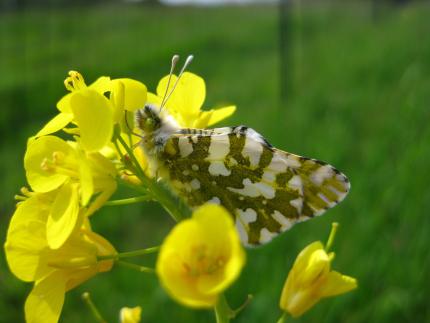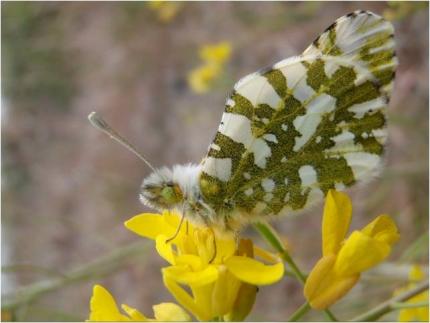ARCHIVED NEWS RELEASE
This document is provided for archival purposes only. Archived documents
do not reflect current WDFW regulations or policy and may contain factual
inaccuracies.
News release May 5, 2020
Ruth Milner, WDFW, 360-466-4345 Ext 265
Adam Griesemer, USFWS, 360-753-9516
Jason Wettstein, WDFW, 360-704-0258
Ann Froschauer, USFWS, (360) 561-2018
San Juan and Lopez Island landowners signing up
to help conserve species found nowhere else
The Washington State Department of Fish and Wildlife (WDFW) is announcing open enrollment now through May 19 for San Juan and Lopez islands landowners who would like to participate in a voluntary program to help restore Island Marble Butterflies, a species found nowhere else in the world.

Thought to be extinct since 1908, the butterfly was re-discovered by biologists during a prairie survey in San Juan Island National Historical Park in 1998, and a few years later on Lopez Island – but not seen again on Lopez Island since 2006.
The U.S. Fish and Wildlife Service (USFWS) published its final rule in the Federal Register (PDF) today to list the Island Marble Butterfly as an endangered species and designate critical habitat for the species under the federal Endangered Species Act (ESA). The rule is effective June 4.
For the next two weeks, WDFW and USFWS are inviting landowners on San Juan and Lopez islands— especially those with open, grassy landscapes—to help conserve Island Marble Butterflies by enrolling in a Candidate Conservation Agreement with Assurance (CCAA).
The CCAA is a conservation tool under the Endangered Species Act. Conservation measures outlined in the Island Marble Butterfly CCAA’s include creating patches of habitat, limiting disturbance to habitat patches, potentially protecting patches through fencing and potentially allowing deer hunting to limit deer consumption of the mustard plants that butterflies depend upon.
“The CCAA is designed to encourage landowners to take specific actions to provide habitat for the butterfly,” said Hannah Anderson, WDFW’s Wildlife Diversity Division manager. “We are grateful for participation so far and could not conserve this species without landowners willing to help this butterfly,” she added.
The agreements also provide regulatory surety for landowners who could be affected by ESA regulations after the butterfly is officially listed as endangered under the Act, she added. “Although landowners have been signing up for months, there are still two weeks left to sign up to participate in the CCAA before the ESA listing takes effect,” said Anderson.
Landowners enrolled in a CCAA—including those engaged in agriculture, ranching, recreation, and other activities—would experience no risk of violating the ESA by inadvertently killing or injuring the butterflies so long as they participate in the agreed conservation measures.
“We are asking landowners to get out ahead of the ESA listing and voluntarily adopt a few best practices that will help the butterfly recover,” said Anderson.
Agency personnel welcome CCAA participation with private and public landowners, including those that own or manage state, tribal, non-federal, public or private lands. Landowners can also withdraw from the CCAA at any time. For information on how to enroll in the CCAA, please visit this web page.

"These agreements provide a unique opportunity for landowners to contribute to the conservation of the Island Marble Butterfly," said USFWS Washington State Supervisor, Brad Thompson. "Working together, agencies, organizations and landowners can create and maintain habitat for this rare and beautiful butterfly."
The Island Marble Butterfly does not migrate and is only found on San Juan Island. They are most visible in the spring when they are winged adults. For the rest of the year, they are present as either eggs, caterpillars, or chrysalises.
After an Island Marble Butterfly emerges from its chrysalis where it has resided for more than 300 days of the year, it immediately mates and lays eggs on mustard plant flower buds, flying only a short time before dying. This long growth period and distinctive lifestyle have made this contributor to the islands’ ecosystem vulnerable.
WDFW is the state agency tasked with preserving, protecting and perpetuating fish, wildlife and ecosystems, while providing sustainable fishing, hunting and other outdoor recreation opportunities. The agency works to keep common species common and restore species of greatest conservation need.
There are just over 150 species of butterflies in Washington State, with Island Marble, Taylor’s Checkerspot, Monarch, and Mardon Skipper included among the 21 designated as species of greatest conservation need.